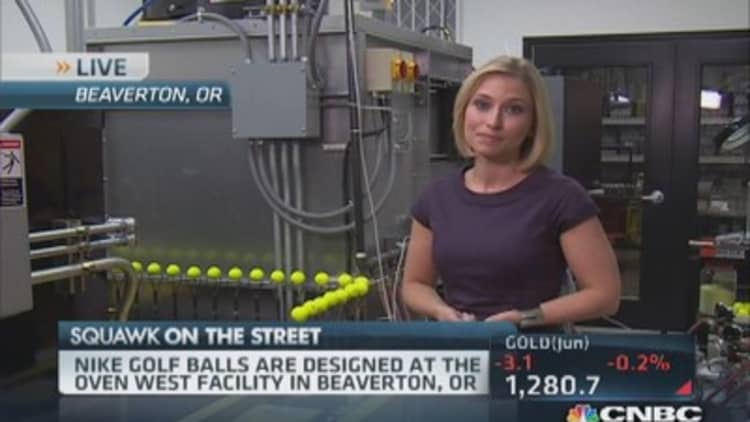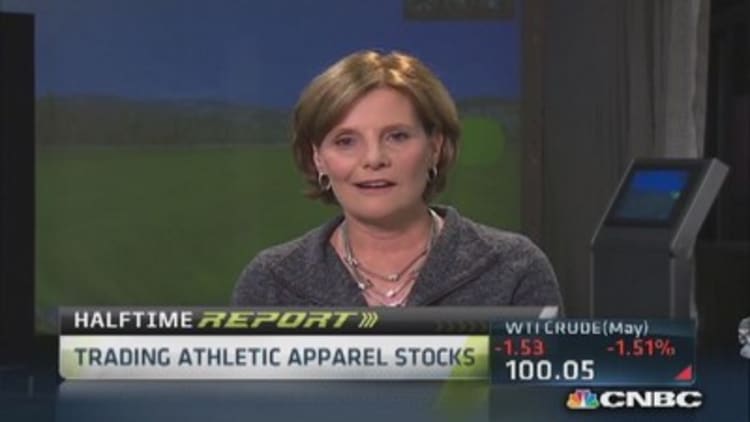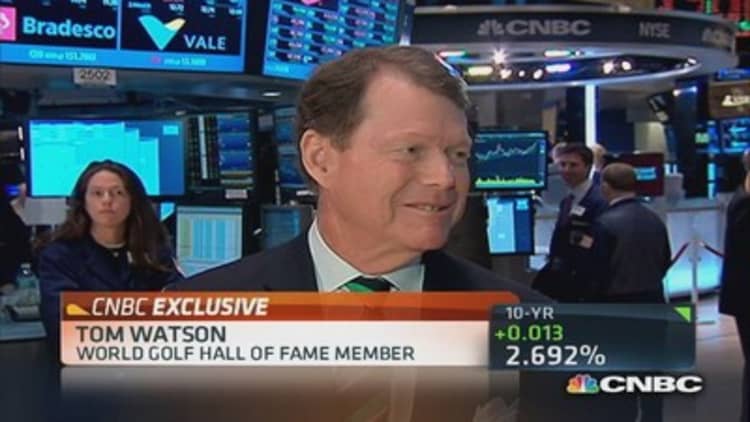It's easy to overlook the nondescript structure that is Nike's Oven West. From the street, the 20,000-square-foot building sits quietly tucked in an office park in Beaverton, Ore., about two miles from Nike's corporate headquarters.
But walk through the doors, and there's no mistaking these interiors with those of its neighbors. Oven West is a stand-alone R&D laboratory dedicated entirely to golf balls—developing, testing, and ultimately bringing new models to market.
That may sound like a relatively simple task. After all, we're talking about balls that fit in the palm of your hand and have been known to easily disappear in sand traps, woods and ponds. (In the U.S. alone an estimated 300 million golf balls are said to be lost each year.)

But a tour of Nike's Oven West quickly dispels that assumption. For Nike Golf, it's a science requiring some 40 engineers, an array of sophisticated machines, designated testing areas, even a golf ball cannon. The balls made here—not to mention their raw materials—are put through every kind of test, from a machine that looks like an arcade claw game that makes sure each ball conforms to regulation, to a so-called "spinach test" in which balls are dumped in a vat of water and fresh spinach and spun around for up to two days to test grass stain prevention.
Read MoreTrump snatches up Irish golf course
And every detail is accounted for. Take the outer coating. There's a room dedicated to this step, where balls sit atop pegs and slowly wind their way along a conveyor belt as the coating is carefully applied by a machine. If the thickness of that coating is off by even a couple microns—we're talking the thickness level of a fifth of a strand of hair—then the ball's resulting trajectory could be affected by as much as several yards when hit.

The lab's goal: One new prototype or design tweak per day.
"This represents the epicenter of everything golf balls," says Cindy Davis, president of Nike Golf. "This literally is where all the great innovations are created, hatched, tested and ultimately brought to market."
Hence the name Oven West. Nike's apparel and footwear R&D lab is called The Kitchen. So when Nike Golf decided to build out a separate R&D lab for golf clubs, just outside of Fort Worth, Texas, the term "oven" seemed appropriate – both in terms of "cooking up" innovations and thanks to the summer heat, says Davis. So when the company decided to double down on golf balls and build a second stand-alone facility in Beaverton a few years ago, the natural choice was Oven West.
Right now the facility is focused on its new RZN line of golf balls. With four different RZN designs just hitting store shelves, the facility is busy testing the products and seeing how the technology can be evolved for future versions.
Read MoreWhere the golf industry is starting to boom
What makes the RZN model special is its core. As the name suggests, it's comprised of resin, a material that's lighter than the more traditional rubber core, that's been molded in a so-called speedlock shape that could best be described as a pattern resembling a waffle iron. Chemical maker DuPont is providing the resin base, and Nike's engineers say that despite the fact that the raw material costs more than rubber, it's easier and faster to use, cutting down on labor. The textured surface, they say, allows the outer layers of the ball to better grip the core, minimizing air within the ball to create more energy at impact. That's supposed to help average golfers, particularly those with an off-center swing.
Pro golfer and Nike spokesperson Rory McIlroy already uses the RZN line in tournaments, and the sport's biggest celebrity and fellow Nike endorser Tiger Woods is supposed to begin using the new balls publicly this year. (Though, given the fact that he's now sitting out the Masters, just when is up in the air.)
Read MoreHow to find the best vacation rental bargains
But for all of the gadgets and expert manpower at Oven West, Nike still has a long way to go when it comes to golf ball dominance. The $1.2 billion industry is crowded with competition, including companies like Spalding, Maxfli, Callaway and market leader Titlelist. More than 1,300 golf ball designs were tested in 2013, according to the United States Golf Association, hailing from 73 different companies; less than 2 percent failed to make the regulatory cut.

In fact, an estimated 840 million (or 70 million dozen, in industry parlance) balls are produced each year, according to Nike—enough to wrap around the circumference of the Earth.
So why are golf balls so important to Nike? "We want to be seen not just as the Nike brand but as the Nike Golf equipment company, and it's very difficult in this industry to be seen as a golf equipment manufacturer unless you have the full line," says Mike Pai, global category director for golf balls at Nike Golf.
For its part, Nike Golf won't divulge its golf ball sales, but revenue did grow by low double digits in 2013, Pai said. Nike expects similar growth this year.
Read MoreInside the million dollar world cup rivalry
Balls are just one part of the Nike Golf strategy. Perhaps not surprisingly, it's already a leader in golf apparel and footwear; that's why the company's rolling out three new limited edition golf shoe lines and unveiling new outfits inspired by its celebrity spokespeople ahead of next week's Masters. It's also expanding its digital products, peddling a new tool called the Nike RZN Recommender to help consumers determine which golf ball is best suited to their needs.
The strategy seems to be working, if slowly. Nike Golf pulled in $791 million in revenue in fiscal 2013, a 9 percent increase from 2012, according to its earnings report. Still, for a sport racking up $10 billion globally, there's more market share to be had.
"It's a crowded field with a lot of really good competitors with a lot of longevity in the industry," says Pai, as Oven West's machines buzz around him. "For us it's all about innovation because we know we're going to win if we provide innovation that others don't have or haven't provided."


